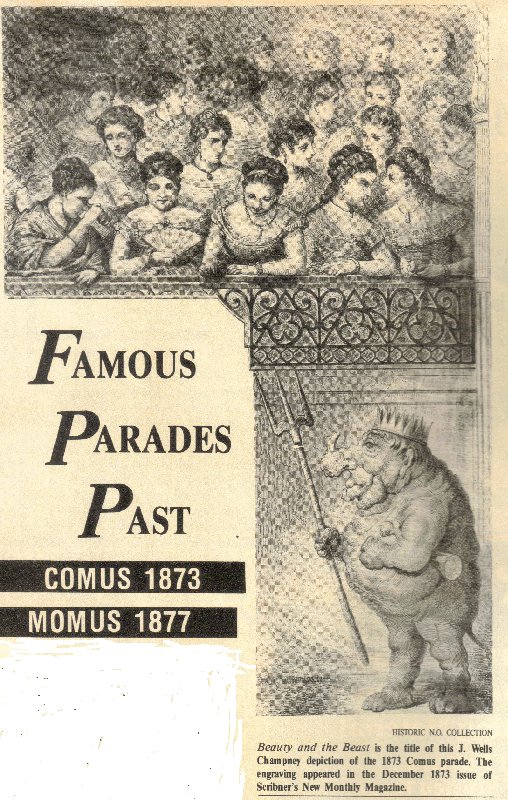Little Known Mardi Gras Facts!!
1. Floats mounted on St. Charles Avenue streetcars? The 1900 Nereus parade tried the idea, but the experience was deemed a failure and the club gave up parading soon after. They still hold a yearly ball, however. The Phunny Phorty Phellows decorate a streetcar for their Twelfth Night ride each year, but they don’t decorate the car exterior much, and they don’t mount a float onto a streetcar.
2. Many krewes rent their floats, signing three to five year contacts with the float builder.
3. Not all doubloons are made from aluminum. Many krewes mint fancier ones out of more expensive metals -silver, gold, copper, brass, etc.- that are sometimes designed and painted in Europe. These doubloons are kept by the krewe members or given as krewe favors or gifts.
4. Early New Orleans parades (1860s) were built partially in Paris and finished in New Orleans. The first parade constructed entirely in New Orleans was Comus 1873, entitled Missing Links to Darwin’s Origin of the Species, built by George Soulé. The Missing Links parade was an important event in New Orleans’ Mardi Gras history, becoming one of the first major parades to use satire and political commentary. Many of the images depict figures related to the Civil War and Reconstruction, such as Ulysses S. Grant, Benjamin Butler, and Louisiana Governor Henry Warmoth. Also depicted are notable figures such as Charles Darwin, and Algernon Badger (head of the despised Metropolitan Police).
5. The first recorded throw was in 1871; a Twelfth Night Reveler, masked as Santa Claus, tossed small gifts to the parade crowd.
6. How much of a king is Rex, King of Carnival? In 1950, the Duke and Duchess of Windsor attended the Rex ball and found themselves face to face to face with the pretend only royalty, the King and Queen of Rex. Guess which couple did the bowing? The gracious Windsors!
7. How is the date for Mardi Gras determined? This year, the date is February 12, but any Tuesday from February 3 to March 9 could be the one. The rule is: Mardi Gras is always 46 days before Easter, which is always the first Sunday after the full moon following the Spring Equinox. When is the Spring Equinox? It’s the day when the sun crosses the plane of the earth’s equator, making day and night all over the earth the same length. Since this date shifts, Easter changes, which is why the date of Mardi Gras is moveable.
8. 1899 was the year of the Big Snow. There were big chunks of ice in the Mississippi River during the final weekend before Fat Tuesday.


Leave a Reply